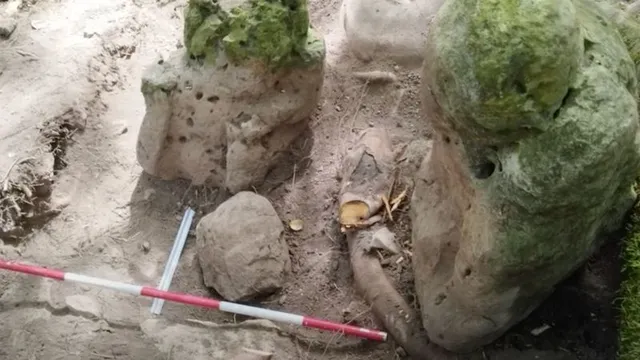
Archaeologists uncover nearly 3,000-year-old Mayan city in Guatemala
2025-05-30 18:16- Archaeologists found an ancient Maya city called Los Abuelos in Guatemala, highlighting its significant architectural features.
- The site dates back to the Middle Preclassic period and includes pyramids, sanctuaries, and unique canals.
- These findings expand our understanding of Mayan civilization and its urban organization, suggesting its cultural and historical importance.
Express your sentiment!
Insights
In the northern region of Guatemala, archaeologists have made a groundbreaking discovery of a nearly 3,000-year-old Mayan city known as Los Abuelos. This ancient site, which was uncovered as part of the Uaxactún Regional Archaeological Project, showcases a range of significant architectural features, including pyramids, sanctuaries, and a unique canal system. Experts believe that Los Abuelos served as an important ceremonial center for the Maya civilization during the Middle Preclassic period, indicating its historical significance in the broader context of Mayan culture. The city is situated approximately 21 kilometers from the archaeological site of Uaxactún, near the Mexican border. Among the remarkable findings at Los Abuelos are two human-like sculptures, which are thought to represent an ancestral couple linked to practices of ancestor worship. These artifacts span various periods, with some sculptures dated between 500 and 300 BC. This indicates that the site has a rich history and potentially played a crucial role in Mayan rituals and social practices. Additionally, nearby excavations at the sites of Petnal and Cambrayal revealed further insights into the urban planning of the ancient Maya. In Petnal, a pyramid standing 33 meters high was discovered, adorned with evocative murals that date back to the Preclassic Maya period. Meanwhile, Cambrayal features an innovative water canal system within a palace, showcasing advanced hydraulic engineering that supported the urban infrastructure of the time. These discoveries illuminate the interconnectedness of these three sites, forming an urban triangle that exemplifies the sophistication of Maya civilization and its ceremonial and socio-political organization. The collaborative effort of Guatemalan and Slovak archaeologists, along with international experts, has significantly contributed to understanding the Mayan legacy, demonstrating that new findings can still emerge from Guatemala’s rich historical landscape.
Contexts
The Maya civilization, one of the most fascinating ancient cultures, emerged in Mesoamerica and flourished for centuries, peaking between 250 and 900 CE. This civilization was established in present-day Mexico, Guatemala, Belize, Honduras, and El Salvador. The Maya are renowned for their sophisticated writing system, intricate art, monumental architecture, and advanced mathematical and astronomical systems. They built sprawling city-states with impressive structures such as pyramids, palaces, and observatories, which served not only as administrative centers but also as monumental sites for ritualistic and ceremonial activities. Key cities, including Tikal, Palenque, and Copán, showcase the Maya’s architectural brilliance and their connection to the vast trade networks that spread across Mesoamerica. The Maya developed a complex social structure that embraced a hierarchy of kings, nobles, priests, merchants, and farmers. Religion played a significant role in their culture, with a pantheon of gods associated with nature and the cycles of life. They practiced a polytheistic faith, constructing elaborate ceremonies that involved human sacrifices to appease their deities. The Maya calendars, particularly the Tzolk'in and Haab', illustrated their exceptional understanding of astronomy and timekeeping, allowing them to predict celestial events accurately, which were deeply intertwined with their agricultural practices and religious observances. However, the Maya civilization began experiencing decline from the late 8th century onwards. Various theories attempt to explain this downturn, including environmental changes, overpopulation, warfare, and prolonged drought. The combination of these factors may have triggered food shortages and social unrest, leading to the abandonment of many urban centers. By the arrival of the Spanish in the 16th century, many Maya cities were already in decline, though some continued to thrive in isolated regions. The colonization led to significant cultural disruptions, as the Spaniards imposed new governance and religion, leading to the near decimation of the indigenous population and their cultures. Today, the legacy of the Maya civilization endures through archaeological findings and the descendants of the Maya, who still inhabit the region. They maintain aspects of their ancestral culture, language, and traditions, showcasing resilience against the backdrop of colonization and globalization. Ongoing archaeological research continues to unveil the complexities of Maya society and their advancements, ensuring that the history of this remarkable civilization remains an essential part of understanding human development.